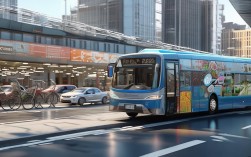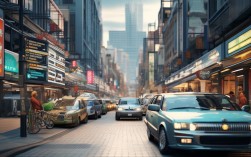Transportation is an integral part of modern life, shaping how we move, connect, and interact with the world. From ancient footpaths to advanced hyperloop systems, the evolution of transportation reflects human ingenuity and societal progress. This article explores the multifaceted nature of transportation, examining its historical development, modern innovations, environmental impacts, and future trends, while also addressing its role in daily life and global economies.

Historical Evolution of Transportation
The history of transportation is a story of continuous adaptation and innovation. Early humans relied on walking and animal domestication for movement, with the invention of the wheel around 3500 BCE revolutionizing land transport. Water transportation followed, with ships enabling trade and exploration across vast distances. The Industrial Age marked a turning point with the advent of steam-powered locomotives and steamships, drastically reducing travel time and expanding trade networks. The 20th century saw the rise of automobiles and airplanes, transforming personal mobility and global connectivity. Each leap in transportation technology has reshaped societies, economies, and cultural exchanges.
Modern Transportation Systems
Today, transportation is a complex web of interconnected systems designed for efficiency and accessibility. Urban areas boast extensive networks of buses, trams, and subways, while rural regions depend on cars and motorcycles for flexibility. Air travel connects continents, with over 100,000 flights operating daily worldwide. Maritime transport remains the backbone of global trade, carrying over 90% of goods by volume. Freight trains and trucks facilitate land-based logistics, ensuring timely delivery of products. These systems are supported by advanced infrastructure, including highways, airports, and ports, all managed through sophisticated logistics and scheduling technologies.
Environmental Challenges and Sustainable Solutions
Despite its benefits, conventional transportation poses significant environmental challenges. The transportation sector accounts for nearly 24% of direct CO2 emissions from fuel combustion, according to the International Energy Agency. Road vehicles, particularly those relying on fossil fuels, are major contributors to air pollution and greenhouse gas emissions. To address these issues, the industry is shifting toward sustainability. Electric vehicles (EVs) are gaining popularity, with global sales surpassing 10 million in 2025. Public transportation is also evolving, with cities investing in electric buses and bike-sharing programs. Additionally, innovations like hydrogen-powered vehicles and carbon-neutral aviation fuels are being explored to reduce the sector’s ecological footprint.
Technological Advancements in Transportation
Technology is reshaping transportation in unprecedented ways. Autonomous vehicles (AVs) promise to enhance safety and efficiency by minimizing human error. Companies like Tesla and Waymo are already testing self-driving cars, which could revolutionize urban mobility. Ride-hailing apps such as Uber and Didi have transformed personal transportation, offering on-demand services that reduce the need for car ownership. In logistics, AI-powered route optimization and real-time tracking systems streamline supply chains, reducing costs and delivery times. High-speed rail networks, like Japan’s Shinkansen and Europe’s TGV, continue to set benchmarks for speed and reliability, making intercity travel faster and more convenient.
Transportation and Urban Development
Transportation plays a pivotal role in urban planning and development. Cities with efficient public transport systems, such as Tokyo and Singapore, experience less traffic congestion and lower pollution levels. In contrast, car-dependent cities often face gridlock and environmental degradation. Urban planners are now prioritizing transit-oriented development (TOD), which focuses on creating mixed-use communities around public transportation hubs. This approach reduces reliance on cars, promotes walking and cycling, and enhances the quality of life. Smart cities are integrating IoT (Internet of Things) technology to manage traffic flow, optimize public transport schedules, and improve infrastructure maintenance.
Economic Impact of Transportation
Transportation is a cornerstone of the global economy, facilitating trade, tourism, and labor mobility. The logistics industry, valued at over $8 trillion, employs millions of people worldwide and ensures the smooth flow of goods across borders. Efficient transportation networks enable businesses to access larger markets, reducing production and distribution costs. Tourism, a $1.7 trillion industry, relies heavily on air, road, and rail transport to connect travelers with destinations. Conversely, transportation disruptions, such as port congestion or fuel shortages, can have cascading effects on supply chains and economic stability. Investing in resilient and efficient transportation systems is thus crucial for sustainable economic growth.
Future Trends in Transportation
The future of transportation is poised for transformative changes. Hyperloop technology, which uses vacuum tubes to propel pods at near-supersonic speeds, could revolutionize long-distance travel. Space tourism, pioneered by companies like SpaceX and Blue Origin, may soon make intergalactic travel a reality. Urban air mobility (UAM), including electric vertical takeoff and landing (eVTOL) aircraft, promises to alleviate traffic congestion by offering aerial taxi services. Moreover, the rise of mobility-as-a-service (MaaS) platforms, which integrate various transport options into a single app, could simplify travel planning and promote multimodal commuting. These advancements highlight the dynamic nature of transportation and its potential to reshape how we experience the world.
Table: Key Modes of Transportation and Their Characteristics
| Mode | Speed | Capacity | Environmental Impact | Primary Use Case |
|---|---|---|---|---|
| Walking | Slow (5 km/h) | Low (1 person) | Negligible | Short-distance urban travel |
| Cycling | Moderate (15 km/h) | Low (1 person) | Very low | Short to medium-distance trips |
| Car | High (60-120 km/h) | Medium (4-5 people) | High (fossil fuels) | Personal, flexible travel |
| Bus | Moderate (30-50 km/h) | High (30-100 people) | Moderate (diesel/electric) | Urban public transport |
| Train | High (150-300 km/h) | Very high (500+ people) | Low (electric) | Intercity, bulk goods |
| Airplane | Very high (800 km/h) | Medium (150-300 people) | High (kerosene) | Long-distance, international |
| Ship | Low (20-40 km/h) | Very high (thousands of tons) | Moderate (heavy fuel) | Global trade, bulk transport |
FAQs
How does electric transportation help reduce carbon emissions?
Electric vehicles (EVs) produce zero tailpipe emissions, significantly reducing air pollutants compared to conventional internal combustion engine vehicles. When charged with renewable energy sources like solar or wind power, EVs can achieve near-zero lifecycle emissions. Additionally, advancements in battery technology are increasing the efficiency and range of EVs, making them a viable alternative for reducing the transportation sector’s carbon footprint. Governments worldwide are incentivizing EV adoption through subsidies, tax breaks, and the development of charging infrastructure to accelerate this transition.
What are the main challenges in implementing autonomous vehicles?
Autonomous vehicles face several technical, regulatory, and societal challenges. Technically, ensuring the safety and reliability of AVs in complex and unpredictable environments, such as heavy traffic or adverse weather, remains a hurdle. Regulatory frameworks are still evolving, with policymakers addressing issues like liability in accidents and data privacy. Societal challenges include public trust and acceptance, as well as potential job displacement for drivers in sectors like trucking and taxis. Overcoming these obstacles requires collaboration between governments, tech companies, and communities to create a safe and equitable transition to autonomous transportation.
In conclusion, transportation is a dynamic and essential aspect of human civilization, constantly evolving to meet the demands of a changing world. While it presents significant challenges, particularly in terms of sustainability and equity, ongoing innovations and sustainable practices offer promising solutions. As we look to the future, transportation will continue to shape how we live, work, and connect, driving progress toward a more efficient, accessible, and greener world.











